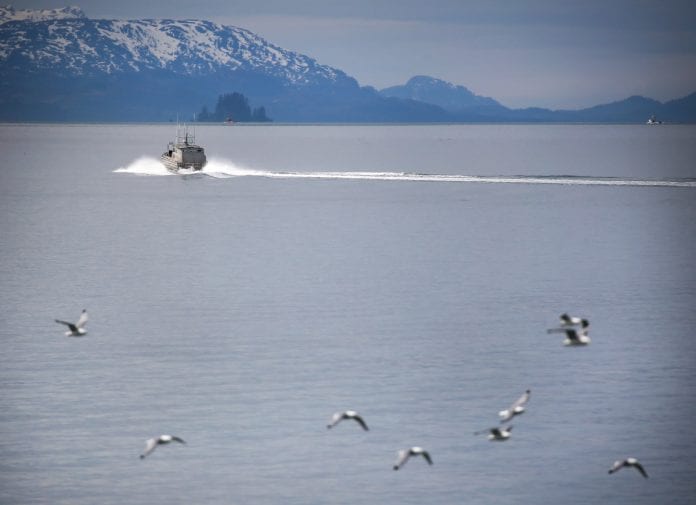
Another week has gone by with no Copper River district opener, while up in the Coghill District the chum salmon have shown up, weighing an average of nine pounds.
Whatever retail offerings are available for Copper River kings and sockeyes are selling for prices that limit consumer urges to buy, say folks working in the seafood department of Anchorage supermarkets. One of the few places where these fish were available during the second week of June was the online purveyor FishEx, which priced their fresh Copper River king fillets at $67.96 and fresh Copper River sockeye portions at $46.95 a pound.
On the bright side, the chum run in the Coghill district is strong and Jeremy Botz, gillnet area management biologist for the Alaska Department of Fish and Game in Cordova says he is optimistic about making its escapement goal on the reds.
The slowed fishery in the Copper River district notwithstanding, Copper River Seafoods recruiters were busy in Anchorage on June 2 interviewing prospective workers for their processing facilities in Anchorage, Cordova, Kenai, Kotzebue, Naknek and Togiak.
Leonard Wheeler, general manager of CRS’s Anchorage West plant, said he had 52 people at work there already, with seven more completing their orientation. “We got a lot of applications,” said Wheeler, who was born and raised in Cordova and grew up fishing there. His grandparents, parents, uncles, brothers and sisters were all fishermen, he said,
CRS recruiter Terry Abarro greeted some two dozen men and women who showed up looking for work and asked them to tell the others a little about themselves, to get to know each other a little, because they might end up working at the same plant. She also told them that once hired by CRS, they would be eligible to apply for other jobs there on an in-house basis.
Most of the jobs start at $9.84 an hour, the state minimum wage, but the hourly rate was higher for special skills.
She also warned them “no fish, no work, no pay” and that the company provided food and housing, plus laundry services, for those employed outside the Anchorage area. Daily charges for room and board deducted from their paychecks would be reimbursed in full if they successfully completed their contracts, she said.
“Be flexible,” Wheeler told them. “Once we get going we run a pretty steady schedule.”
Those who work out well during the summer fisheries who want to transfer to another plant during the winter, he could get on the list, he said.
The job applicants listened intently, then waited their turn for an interview with Wheeler or Abarro.
Among them was Larry Evans, a former assistant manager of a Chicago sandwich shop, who’s lived in Alaska the past eight years. In previous years he did Pacific cod and salmon processing for CRS and now he was back for more, hoping for a job out of town.
So was Johnson Wersong, who came to Alaska by way of California, and earlier to California from Ghana. He had just finished up a job casing up cod for another processor at Dutch Harbor when someone suggested that he apply to work for CRS. While willing to take any seafood processing work Wersong said he’d lie to eventually work in equipment maintenance in a power plant, as he had done in the mining industry in Ghana.
Nyayual Kuelieth Teny, 45, who came to Alaska from Sudan a decade ago, also a year of processing experience with CRS and was eager to get to work.
Carlos Paez, who came to Alaska from Chicago in 1984, said his goal was a position in data processing or statistics with a processor, but would take whatever was offered. A former employee of ADF&G, he has a bachelor’s degree in biology and master’s in environmental studies and had worked in salmon out migration studies for the state, he said,
And then there was Yvette James, a native of Los Angeles, who said she was looking “for something that will keep me steady, keep me busy.
“I’m good at multi-tasking,” she said. “Once they get me, I’m consistent.”
Most of those seeking jobs that day were middle-aged, and in good physical shape, which they attributed to routine physical exercise.
“I walk and catch a bus a lot,” James said. “And I don’t worry any more.
I gave it up to Jesus.”














